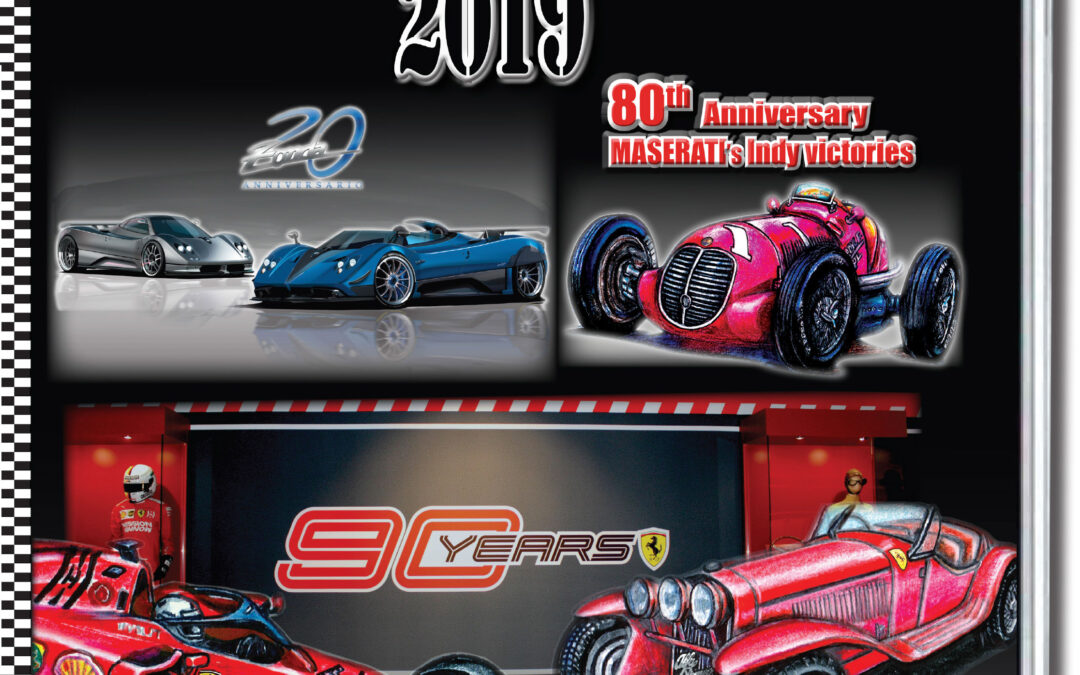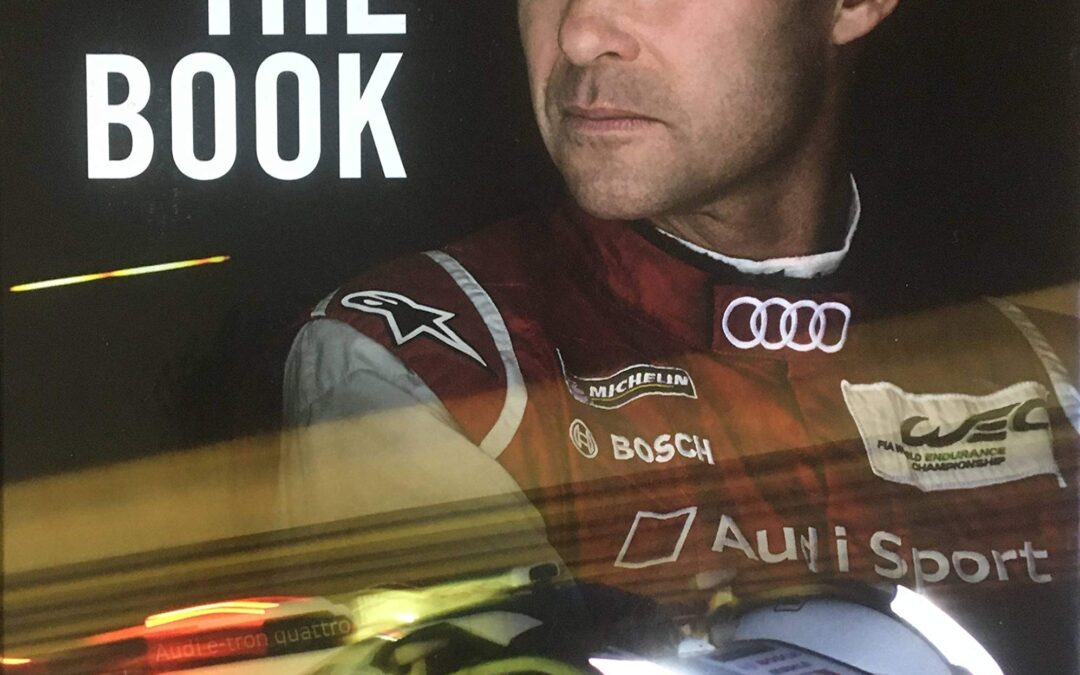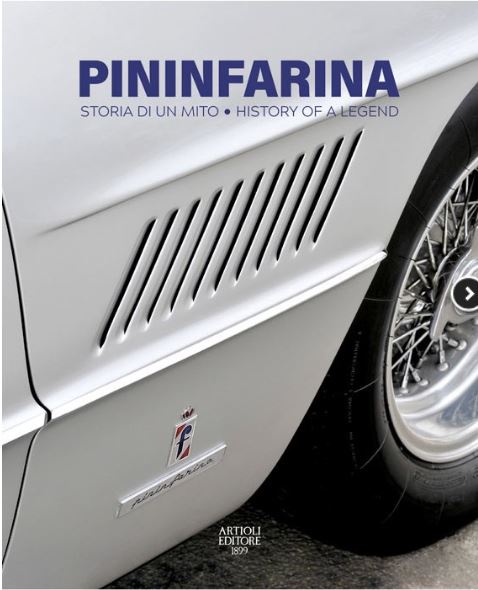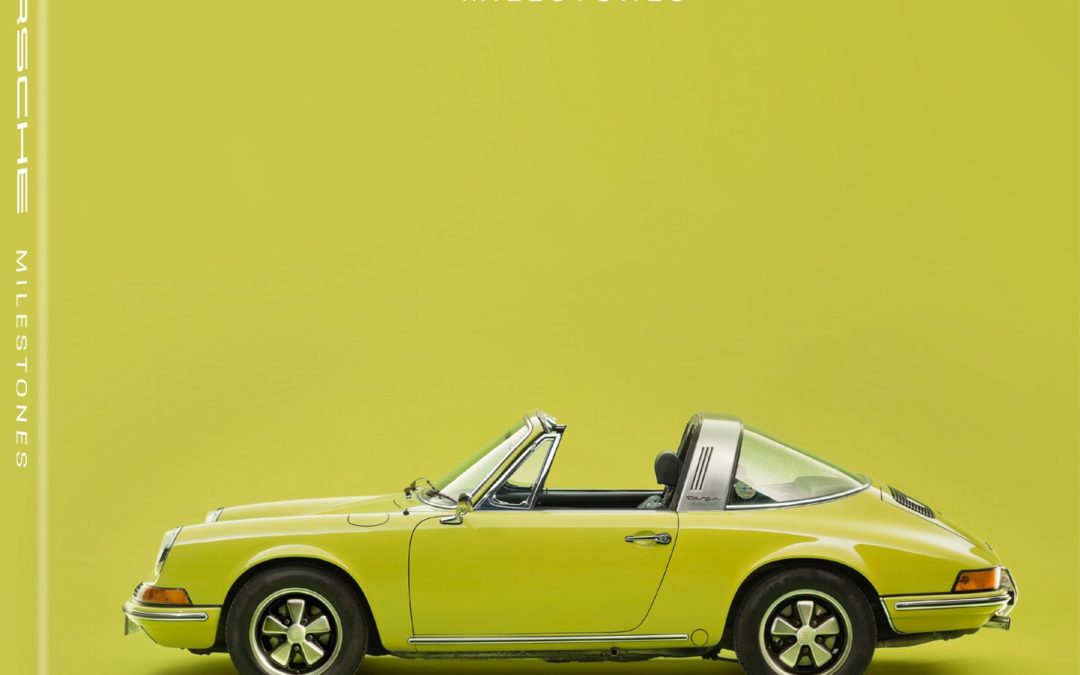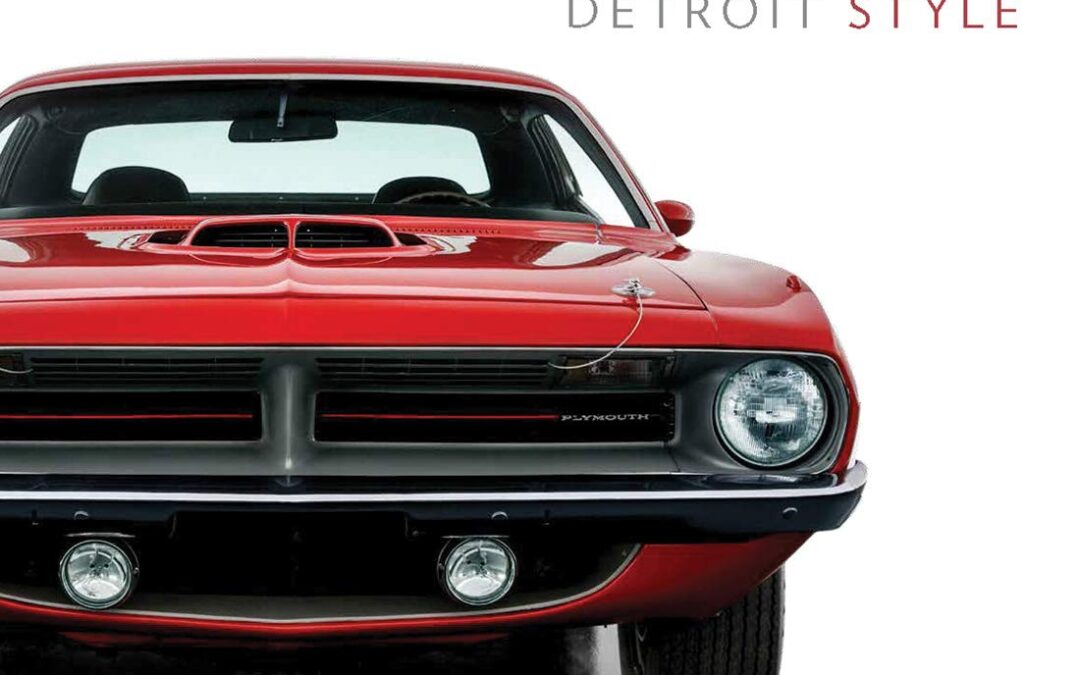
A dynamically illustrated exploration of 70 years of automotive design in the Motor City
Detroit, nicknamed Motor City, has always been a leader in car design. As the city became the center of the American automobile industry in the early 20th century, its studios became incubators for new ideas and new styles. This volume highlights the artistry and influence of Detroit designers working in the industry between 1950 and the present day, giving readers a sumptuously illustrated opportunity to discover the ingenuity of influential (and surprisingly little-known) figures in postwar American car design. Detroit Style showcases 12 coupes and sedans, representing both experimental cars created solely for display and iconic production models for the mass market. Dozens of design drawings and images of studio interiors—along with paintings and sculptures—highlight the creative process and dialogue between the American art world and car culture. These materials in addition to interviews with influential figures in car design today bring new insights and spark curiosity about the formative role Detroit designers have played in shaping the automotive world around us, and the ways their work has responded to changing tastes, culture, and technology.

One day in early 1960, the French consulate in Detroit organised a cocktail party. Because of his knowledge of the French language, designer Henry De Ségur Lauve was invited along as an interpreter. At the party, he met Pierre Bercot, general manager of Citroën. They got talking about Citroën design and Bercot invited De Ségur Lauve for a meeting in Paris. That conversation went positively and in May 1960 De Ségur Lauve signed a cooperation agreement with Citroën to produce design proposals that suited the taste of American consumers.
From then on, De Ségur Lauve came out with a fair number of sketches with a decidedly American influence for new models. The first designs are still sometimes reminiscent of facelifted DSs, but soon they look more like spacecraft than cars for everyday use. De Ségur Lauve had access to Citroën’s design studio and could see what the designers were working on, which allowed him to create ‘Americanised’ variants based on those models. Examples found in this book include proposals for the later Citroën CX and the interior of the Citroën SM.
Much of De Ségur Lauves spectacular designs ended up in the Citroën archives and were forgotten. After more than 50 years, this book showcases his work prominently for the first time. A unique piece of Citroën history!
The texts in the book are in Dutch, French and English.
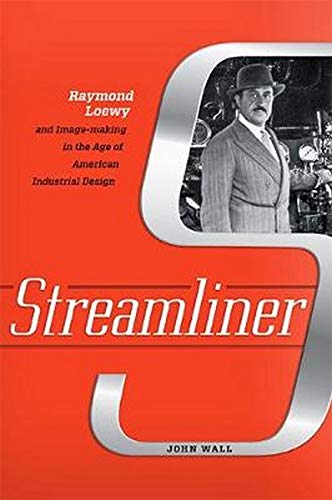
The true story of Raymond Loewy, whose designs are still celebrated for their unerring ability to advance American consumer taste.
Born in Paris in 1893 and trained as an engineer, Raymond Loewy revolutionized twentieth-century American industrial design. Combining salesmanship and media savvy, he created bright, smooth, and colorful logos for major corporations that included Greyhound, Exxon, and Nabisco. His designs for Studebaker automobiles, Sears Coldspot refrigerators, Lucky Strike cigarette packs, and Pennsylvania Railroad locomotives are iconic. Beyond his timeless designs, Loewy carefully built an international reputation through the assiduous courting of journalists and tastemakers to become the face of both a new profession and a consumer-driven vision of the American dream.
In Streamliner, John Wall traces the evolution of an industry through the lens of Loewy’s eclectic life, distinctive work, and invented persona. How, he asks, did Loewy build a business while transforming himself into a national brand a half century before “branding” became relevant? Placing Loewy in context with the emerging consumer culture of the latter half of the twentieth century, Wall explores how his approach to business complemented―or differed from―that of his well-known contemporaries, including industrial designers Henry Dreyfuss, Walter Teague, and Norman Bel Geddes. Wall also reveals how Loewy tailored his lifestyle to cement the image of “designer” in the public imagination and why the self-promotion that drove Loewy to the top of his profession began to work against him at the end of his career. Streamliner is an important and engaging work on one of the longest-lived careers in industrial design.
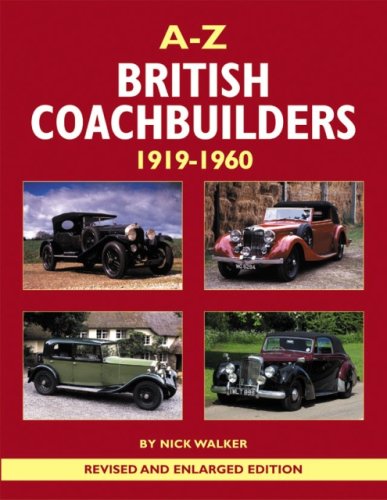
Coachbuilding on motor car chassis evolved from carriage building, and the development of the coachbuilt body closely followed that of the motor car. From the beginning of the 20th century until the arrival in the late 1930s of unitary construction for motor cars, in which the separate chassis and body gave way to a combined body/chassis structure, coachbuilding flourished in Britain, with hundreds of firms exhibiting their latest designs at motor shows year after year. But by the outbreak of World War 2, the industry was already in terminal decline. Many coachbuilders, like Barker or Hooper built one-off bodies for the `carriage trade’, the noble and wealthy who sought the distinction of choosing a style of body and interior to suit their personal tastes and requirements, and such bodies were naturally to be found on the most expensive makes of motor car, like the Rolls-Royce, Bentley and exotic marques from the Continent. Other coachbuilders aimed to produce inexpensive bodies in series for volume manufacturers who wanted, for example, to be able to offer a convertible version of a certain model but did not wish to have to make the bodies themselves. Yet others established a special relationship with a single manufacturer, like Charlesworth with Alvis, in order to procure a steady flow of work. This book is a comprehensive study of coachbuilding, and coachbuilders, in Britain. The author sets the scene by describing advances in fashions and techniques of coachbuilding in separate chapters on the 1920s, 1930s and the postwar period. He then gives a unique A-Z coverage of more than 300 British coachbuilders. In addition, there is a chapter offering useful advice on assessing the condition, and likely repair needs, of a coachbuilt body today. A glossary of coachbuilding terms and what they mean completes the picture. More than 400 photographs, 50 of them in color, have been painstakingly hunted down to illustrate coachbuilding fashions and methods as well as the work of the coachbuilders described in the A-Z section. This new enlarged and revised edition features brand new entries

The 1970s witnessed the rebirth of the British kit car. It may have been the decade that taste forgot, but it was also a period where nothing was off limits. Would sir or madam like their car with three wheels or six? How about a windscreen that handily doubles as a door? Perchance something more along the lines of an Edwardian ‘horseless carriage’ with no doors at all? Alternatively, maybe a sports car with a roof at waist level, or even a trike made of timber? How about endless permutations of all of these things and more? Excess All Areas – British Kit Cars of the 1970s is a bountifully-illustrated celebration of homemade cars at their best – and worst.
Author Richard Heseltine is a journalist, author and biographer. A former staff member on Classic & Sports Car and Motor Sport, he has written extensively for Octane, Magneto, Classic Cars, Auto Italia, Autosport and Absolute Lotus. Richard has authored books on subjects as diverse as the British specialist sports car industry and coachbuilt Ferraris. He became a published novelist in 2019 with the release of Life Near The Edge.
“It’s a book as much about lost car culture as it is about the cars themselves” Classic Cars magazine
“My personal book of the year… a fact laden gem” Steve Hole, TKC
“This is a great fun book… right up our street in creativity, ingenuity or just plain wackiness” Jeroen Booij, Maximum Mini

The Yamaha FS1-E is a 1970s icon. Introduced in the early ’70s, it became an instant success, giving 16-year-olds their first taste of motorcycle performance and freedom, and totally overshadowing the other mopeds available at that time.
Many riders had their FS1-E for one year only before progressing to larger machines. Today, nostalgia for the youthful exuberance engendered by the ‘Fizzie’ has resulted in many ex-owners wanting to recreate their pride and joy.
Most FS1E ‘s have not endured the test of time well, and very few good original examples exist. There are, however, plenty of restorable machines around, and this book guides the do-it-yourself restorer through the process, from the minefield of initially finding a machine to restore, to the potential pitfalls of a first restoration. The bikes featured and photographed for the book include a seriously neglected 1974 machine, a part restored 1976 model – of dubious type, and a 1975 DX model which arrived as a pile of bits.
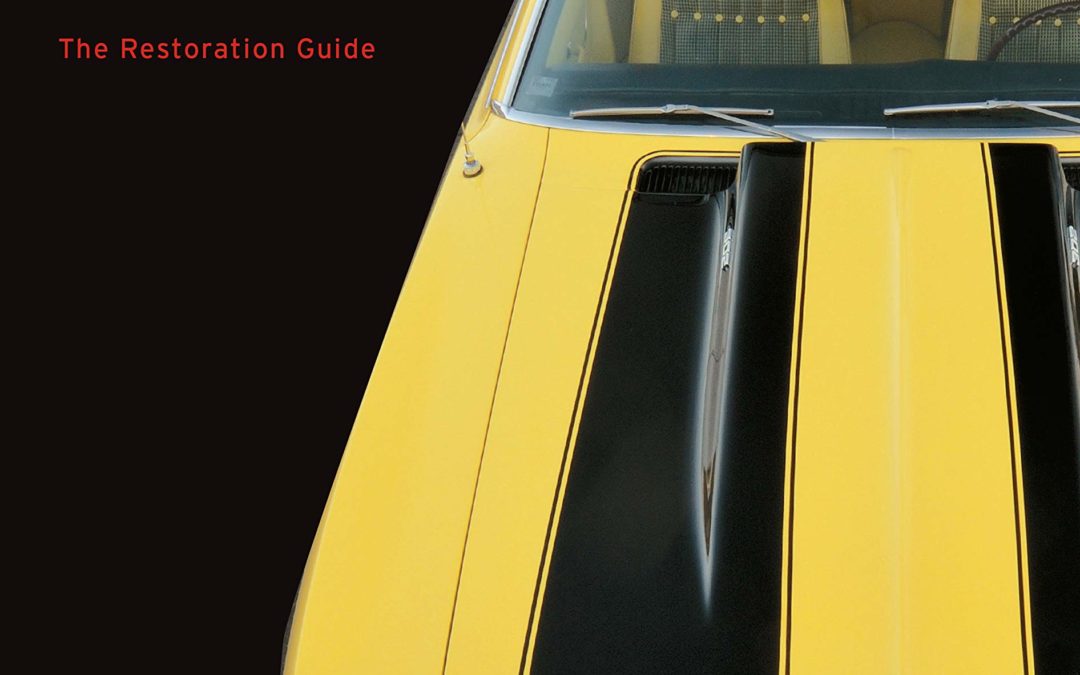
Factory-correct cars will always be the most valuable cars on the market. Original Chevrolet Camaro 1967-1969 tells you exactly which parts, accessories, finishes, fabrics, and colors you must have to restore your Camaro to its factory-original condition—or exactly what to look for when shopping for a restored Camaro.
Some 250 color images detail Chevy’s major performance packages of the period—the SS, RS and Z/28—while exhaustively detailing engines, interiors, and bodies. Of equal importance, muscle-car authority Jason Scott provides factory records, comprehensive specifications, detailed parts lists and codes, and period literature to offer the definitive guide to originality.
Chevrolet’s Camaro was introduced in 1967 on the heels of Ford’s best-selling Mustang. It quickly established itself as the go-to option for muscle-car customers wanting a more aggressive pony car.
During its first generation from 1967 to 1969, GM offered option packages to satisfy all tastes, from six-cylinders grocery-getters to agile small-block cars to big-block monsters ready for drag racing straight off the showroom floor. Today, these first-generation Camaros are some of the most valuable cars in the collectible muscle-car market.
This is a must-have volume for any enthusiast shopping for a first-generation Camaro or about to undertake a restoration project.
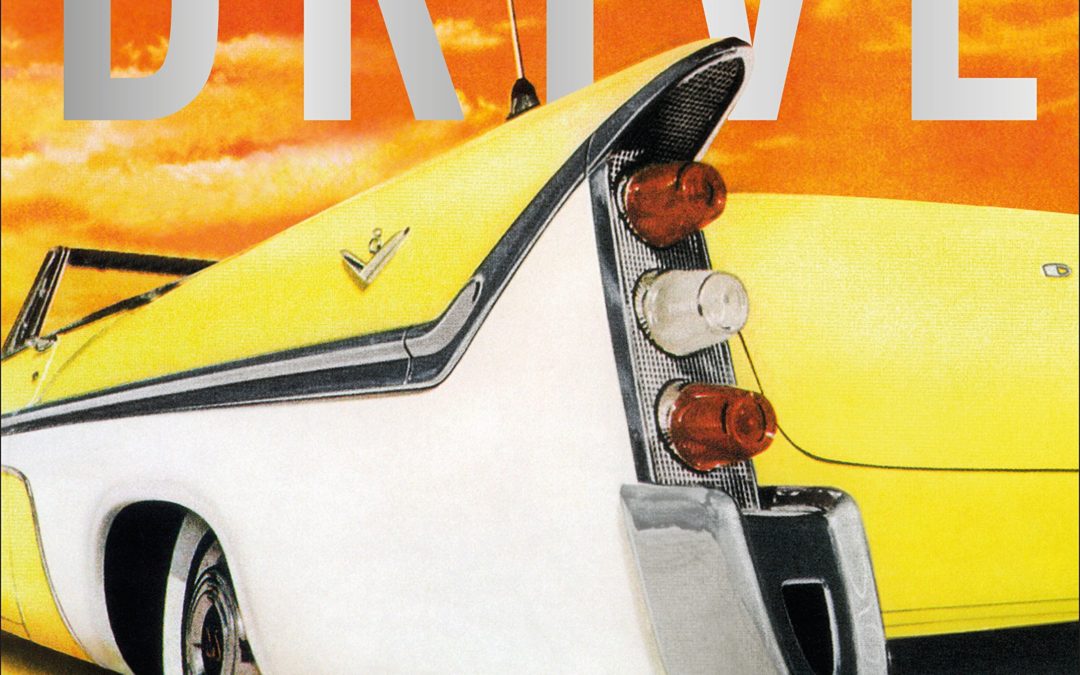
Charting the 130-years from the arrival of horseless carriages to the advent of driverless vehicles, celebrate the automobile and the romance of the open road.
Beginning with the development of the first vehicles powered by an internal combustion engine, Drive explores the early glamour of driving, motor sport, and car design, and looks at how the automobile has shaped the modern world.
Revealing the advances in technology and design that have made cars faster, safer, and better to drive, and transformed them from a means of transportation into objects of status, excitement, and desire, Drive tracks trends in auto manufacturing and the public’s changing tastes in cars: whether it’s Golden Era sports cars such as the MG, Alfa Romeo, Jaguar, and Chevrolet, muscle cars like the Mustang, hot rods, custom cars, the hippie-standard VW, or modern-day hybrid cars. Trivia and fascinating facts covering the growth of car racing, the development of traffic lights, the boom in automobile advertising, the first car washes, and the craft of artisan-made cars complete the subject, making it a must-have for car enthusiasts.
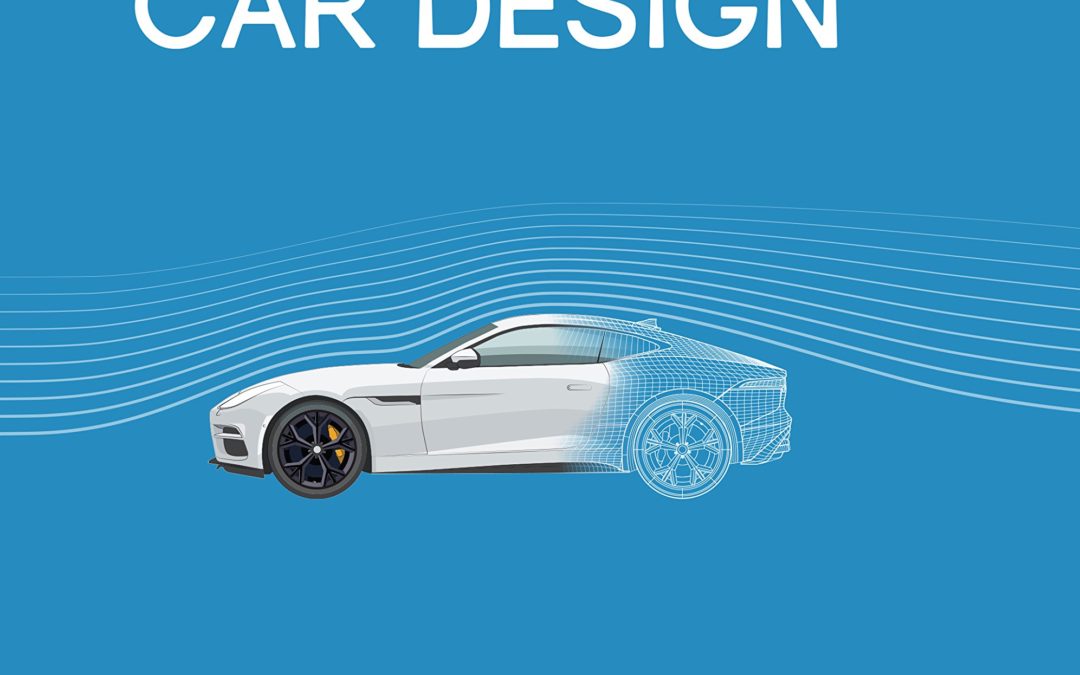
here’s so much more to car design than simply looking good. Speed Read: Car Design beaks down every element a team accounts for when designing vehicles.
People have never been more broadly aware of design as a concept and how it fits into their everyday lives. Even the simplest of consumer products compete to offer something that will better catch the public’s eye and reflect the taste and perceived lifestyle of each individual.
Like all design, car design is complex subject. It’s one in which many people have an interest–and not just gearheads. Every part of a car represents myriad decisions by the design team ruled by engineering, aesthetics, human interface, and emotion. Speed Read: Car Design helps the reader understand the hows and whys of that design process, offering an engaging review of history, theory, key concepts, and key designers. It’s a book for car enthusiasts, design fans, and anyone with a desire to better understand why our wheeled world looks the way it does.
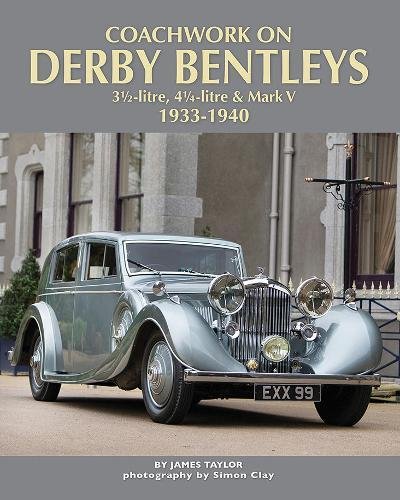
In the 1930s, Rolls-Royce’s Derby factory supplied Bentleys only as chassis, without bodies, and many customers for these refined, fast and enormously desirable cars would then turn to a particular coachbuilder to design and construct a body for them to meet their tastes and requirements. From Abbey of Acton, West London, to Worblaufen of Switzerland, by way of great names like Barker, Gurney Nutting, HJ Mulliner and Saoutchik, Coachwork on Derby Bentleys covers all the British and overseas coachbuilders on the Bentley chassis, and reviews the bodies they built on the 3.5-litre, 4.25-litre and the short-lived Mark V. The British coachbuilders are dealt with in alphabetical order, as are the overseas companies in a separate section, with details of the different types of bodies they supplied. Bentley aficionados will particularly appreciate the inclusion of chassis numbers for all the cars bodied by all the coachbuilders, which makes this a truly inclusive work. There are some 280 colour photographs, including in-detail shoots of 40 outstanding cars by the distinguished automotive photographer Simon Clay, and 80 black-and-white illustrations from the archives. Celebrating as it does the work of the leading coachbuilders of the era, as well as Bentley’s quite exceptional productions of the 1930s, this book offers an unrivaled store of knowledge for the many enthusiasts and owners who care passionately about the cars, and serves as a tribute to the people who made them.

By 1969, the muscle car war among Ford, General Motors, and Chrysler had reached a fevered pitch. Plymouth’s Road Runner, Mopar’s intermediate entry, was leading the charge. For 1970, the Road Runner had its strongest year yet as it housed the best street V-8s Chrysler had to offer.
Author Scott Ross retraces the history of the Road Runner and brings the 1970 model year into full focus. The stripped-down Road Runner exemplified the essence of a purpose-built muscle car: brute power and stunning acceleration. A new aggressive grille and Air Grabber hood provided an audacious yet tasteful performance statement. The back-to-basics ‘Bird had a unique character with its iconic cartoon Road Runner graphics and beep-beep horn.
Underneath the skin, the Road Runner lived up to its persona. The 335-hp 383 was one of fastest 383s Chrysler built because it was fitted with the 440 camshaft, heads, and manifolds for even more performance. The 440 Six Pack car generated 390 hp and gained a reputation as a stout street performer. And at the top, the conservatively rated 425-hp 426 Hemi set the standard for performance.
The Road Runner was lighter than the Cuda and somewhat overbuilt as it was one of the toughest and most consistent muscle cars. To transfer all this power to the ground, the Road Runner was equipped with the A-833 4-speed or TorqueFlite 727 automatic. With a torsion-bar suspension and heavy-duty rear end, the Road Runner handled well. However, these are just a few of the highlights of this complete story.
Each volume in the In Detail Series provides an introduction and historical overview, an explanation of the design and concepts involved in creating the car, a look at marketing and promotion, an in-depth study of all hardware and available options, as well as an examination of where the car is on the market today. Also included are paint and option codes, VIN and build tag decoders, as well as production numbers.
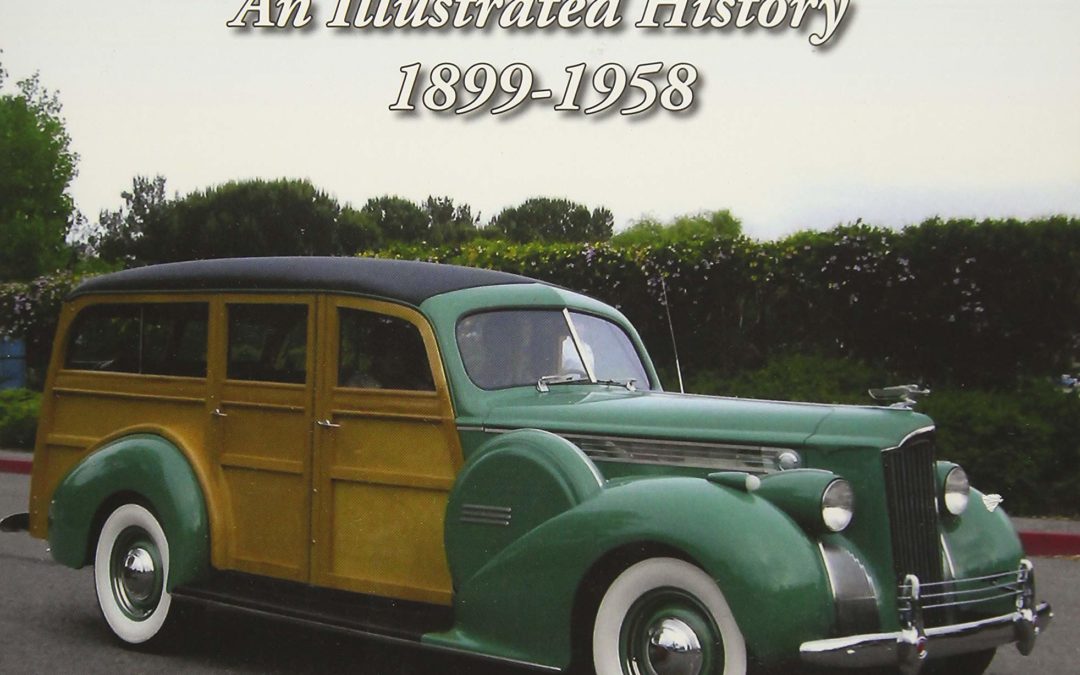
In the long and exciting history of the American automobile business one name stands out above others: Packard! For many years the cars produced by the Packard Motor Car Company were considered the best; a line of sedans, coupes, convertibles and limousines in a wide variety of factory body styles and a seemingly endless array of Custom coachwork. It wasn’t because they were the most costly; a Duesenberg cost more. And it wasn’t because they were the fastest; Stutz usually took that honor. The reason why Packard was so universally admired was because they built an entire range of luxury cars that were fast, sleek, luxurious, stylish, tasteful, wonderfully quiet, durable, reliable and rode well. Packard combined the finest attributes luxury buyers wanted in one beautiful package, and built them with pride. Packard quality was legendary, its engineering considered among the best in the world. And they were built by a company that was known as one of the best-run businesses in the world, solid, profitable, conservative and dependable. Packard stock was the envy of the market, its management was widely admired. Packards, it was sometimes said, were built by gentlemen for gentlemen. From the 1920s to the early 1950s Packard cars were among the most coveted in the world and was the luxury car market sales leader by a wide margin. Cadillac and Lincoln struggled to compete. In this new book author Patrick Foster details the history of a great marque, from its triumphant rise to its sad ending, detailing the tremendous cars it produced and the legend it created.

Indulge yourself with this stunning collection of pin-ups! The art of pin-up glorifies the female form, and John Gladman celebrates beautiful girls from all walks of life. He has a refreshing, timeless style, bringing back the art of the tease at a time when innocence has been lost. Glamour and art meet photography to create John s recognizable and unique look. His imagery is tasteful yet sexy, stirring up sensuality and allure. He has revered and admired the female form throughout his life span, learning posing from the great artists of the past, paying attention to every detail during posing from the hand placement, the arch of the back, to the expressions and nuances, creating an art piece that appears as natural happenstance. John has a modern flair mixed with vintage themes honoring the classic era of the mid-twentieth century.

The Mulholland Experience is a two-fold story. It opens with the recounting of the history about the original Highway, how it was conceived, what its original purpose was, and the man William Mulholland who was the inspiration for the famous road. Secondly, it is a history of the racing that immortalized Mulholland Drive. These histories led to the inspiration of countless movies. The authors searched out and collected many rare and unique first hand accounts. They used exerpts from several years of periodicals that reported the facts of the racing on Mulholland Drive. Chris Banning added his personal insights and Mulholland experiences, giving the book a truly uniqe perspective so you can relive and get a taste of the thrill of what it was like on Mulholland Drive.

In a nation that worships the automobile for the freedom, style, and status that it confers, the Indianapolis 500, run on or near Memorial Day eighty-seven times, is an annual rite of passage celebrating Americans’ love affair with speed. Indy recounts the drivers (677 men and 3 women) who have gone to Indianapolis in the past ninety-five years to live their dreams, staking their lives on the outcome. It highlights the faces in the crowd: hardworking Americans, tinhorn celebrities, hookers, movie stars, gate-crashers, and five American presidents. Terry Reed focuses his narrative on the track’s four quarter-mile-long turns, each the site of triumphs (including those of such multiple winners as Billy Vukovich, A. J. Foyt, and Helio Castroneves); grisly deaths (at least sixty-six, including three unrelated men of the same unusual last name who died in the same turn but in different decades); and bizarre heroics (like the sans souci French driver who downed champagne throughout the 1913 Indy 500 and still won). Reed also examines Indy’s confluence of racing and aeronautics (World War I flying ace Eddie Rickenbacker once owned the track) and the impact upon the event of such forces as segregation, gender politics, food, fads, publicity stunts, world-class partying, and tasteless pop culture. Indy takes readers on an entertaining, full-throttle ride through the history of one of the world’s most famous races and one of America’s most hallowed rituals. It is the definitive account of the crown jewel of American motor

Eric PetersAutomakers have foisted plenty of bad and even laughable cars upon an unsuspecting public over the years. Millions of people have been duped into buying mistakes-on-wheels, while millions more have been subjected to these cars after the new-car smell is gone, revealing only vehicular inadequacy.
Automotive Atrocities: The Cars We Love to Hate is a truly distasteful collection of fake muscle cars, clown-car compacts, faux “luxury” cars, sales disasters, and other truly ugly and ill-conceived four-wheeled follies. Written for anyone who either unwisely decided or was forced against their will to drive an automotive atrocity, this book gives the motoring public the last laugh as everyones least-favorite cars are skewered in book form for the first time.





